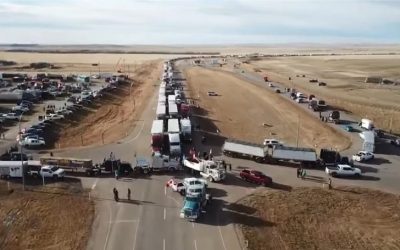Forcing rail carriers to ship a competitor’s cars harms profitability and distorts the investment market
The winter before last, Canadians endured their coldest-ever winter. On the rail lines, deliveries were slowed significantly, creating a backlog of grain and other commodities awaiting transport. To safely ship goods in minus 30 cold—as it was for month after month over that awful winter—rail companies were forced to move shorter and slower trains.
The country’s farmers grew slowly enraged, and pushed Ottawa to step in. Just as the spring thaw began and railways were moving grain more quickly to port, parliament tabled a two-part law.
The law’s first part, imposing grain delivery quotas on the railways, was by then unnecessary. But the second part—a proposal to extend the distances for the country’s so-called interswitching provisions—could end up doing significant damage to Canada’s ports and the country’s two major railways, CN and CP.
The law, viewed by industry analysts as the most significant change to rail service in Canada in two decades, was tabled without consultation, notice or evidence of market abuse.
Investors require confidence that railway market demand for infrastructure will exist for 30 years
The extended interswitching rights—rules that require one rail carrier to pick up cars from a shipper, then deliver them to a competitor—was previously limited to short distances. Mostly confined to just outside the Port of Vancouver, interswitching moves were aimed at improving port bottlenecks.The new law extends the reach of the interchange by more than fivefold: from 30 to 160 kms. It requires railways to charge below-market prices for these moves. The new rates are set even lower than the deeply discounted rates rail companies receive for shipping grain.
Extended interswitching is creating inefficiencies throughout the system: Moving goods twice on an interchange move reduces rail car availability, impacting capacity and speed throughout the entire network and for all goods.
RBC rail analyst Walter Spracklin warns that it opens CN and CP to “poaching” by U.S. railroads. Without reciprocity requirements on U.S. railways, Spracklin adds, there could be permanent loss to U.S. carriers, “weakening all stakeholders’ positions, ports, trucks.”
Shipping goods over the new160 kmradius requires full crews and larger locomotives; indeed, at these distances, shipments become line haul moves. Already railways have been forced to freight goods headed to Vancouver across the U.S. border for transfer to BNSF. CN and CP are being forced to swallow the hefty costs associated with these new shipments.
The law may be extended beyond the current period, set to end in August of 2016, with the interim referred to as “pilot testing.”
But rail investors, don’t like “pilot” policy that regulates rates, distorts the market and arrives out of the blue. Before they invest, investors require confidence that railway market demand for infrastructure will exist for at least 30 to 50 years, according to research done by U.S. Congress.
The impact of extended interchanging is already being felt at the Port Metro Vancouver and not only with traffic losses via Seattle. CN recently served notice that the unreasonable way “interswitch” is being interpreted under the revenue cap—a law that limits rail profits in grain movements—has forced it to reconsider planned investment in the North Shore site leading to theVancouver port.
For CN, bills are already piling up. To more quickly move the roughly 50 trains that enter the Port of Vancouver every day, CN and CP agreed to interswitch each other’s traffic. But the revenue cap has been interpreted to financially disadvantage the railway doing the most interswitching.
The two biggest Canadian railways are facing stronger volume headwinds and “near impossible” comparisons to last year’s gangbuster results, resulting in a downgrade for one and price target cuts for both at Raymond James.
CN, as a result, was hit with a $5 million revenue cap bill last year, and anticipates its revenue cap bill for interchanged goods at Vancouver will be even higher going forward.
Canada’s railway boards are now forced to grapple with an unusual new set of questions—should railways fund new infrastructure builds needed to move goods at below-market rates for a competitor railway? How should the current investment risk in rail capital projects be described to investors?
The government’s reasoning for these drastic new regulations, however, remains simplistic: to increase competition in the rail industry to help ease costs to farmers. But Canada’s railway rates are already the lowest in the world, a massive trucking industry already provides healthy competition and the law is actually hurting Canada’s economy more than it’s helping. The law, a risky, no-gain experiment, should be shelved and replaced with policy that encourages a commercially-driven system rather than punishing an industry already plagued by overregulation.


